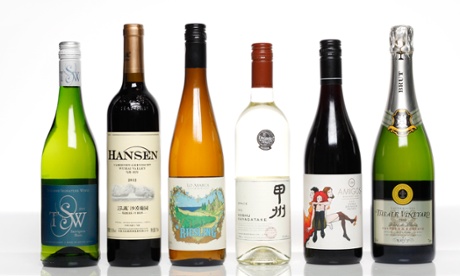
The annual publication of the Oxford English Dictionary never fails to remind me of my weakening grip on the zeitgeist. The more the years go by, the lower the proportion of new words I’ve heard of, let alone used. In this year’s just-published edition, cakeage (the fee you pay for bringing a cake to a restaurant), fur baby (for a furry pet) and awesomesauce (just really great) had hitherto escaped me. Clearly I need to get out (or online) more.
It may follow a more sedate publishing rhythm, but another of Oxford’s weighty, definitive tomes, The Oxford Companion to Wine, offers wine lovers a similar opportunity to see how well they’re keeping pace with the times. First published back in 1991, editor Jancis Robinson’s masterpiece of vinous scholarship has just reached its fourth edition, almost a decade since the third edition appeared in 2006.
Robinson and her co-editor, fellow Master of Wine Julia Harding, assembled a team of more than 187 academics and specialist wine writers to put together the 4,000 entries, which are arranged A to Z over 850-plus tightly packed pages.
Inevitably, it’s the 300 new entries to which the eye is first drawn. Many of these are obscure even for someone like me. I drew a blank on longyan (a red Chinese grape) and tsimlyansky cherny (which apparently makes “tannic, characterful reds” in Rostov, Russia) and was only dimly aware that wine was produced in Nova Scotia, Norway and Tahiti.
For the most part, however, they offer a snapshot of the more significant changes in wine in the past nine years – the regions that have developed sufficiently to deserve separate entries, the production techniques that have gone from fad to mainstream, the notable personalities that have earned a place in the canon.
China, now the fifth largest wine producer in the world, has an expanded section of its own as well as separate new entries on the longyan and cabernet gernischt grape varieties and its oldest and largest wine producer, Changyu. And the fashion for regionality (defined, in the Companion, as “a New World term for the concept … that the location of a vineyard plays an important part in shaping the character of a wine”) is fully represented. Elim, Franschoek and Swartland (South Africa), and Bío-Bío, Elqui and San Antonio (Chile) were barely known a decade ago. Now each of them is producing distinctive, world-class wines.
In its scholarly, studiedly impartial, occasionally sardonic way, the Companion also has much to say about the most pressing ideological divide in the wine world, the battle between the technological producers operating on a vast global scale, and the organic, biodynamic and natural refusenik small producers. Both are represented: the latter in brilliantly succinct summations of natural wine (a term only its infancy in 2006) and orange wine (ditto; according to the Companion it was coined by wine merchant David Harvey in 2004), the former in entries for big brand behemoths Accolade Wines and Casella Family Wines.
But it is perhaps in the sheer abundance and global spread of information that the Companion comes closest to reflecting the vinous planet of 2015. From the rise of international collectors and counterfeiting rackets to the use of concrete eggs for fermentation; from the suddenly ubiquitous tasting term minerality to the current state of play in the cellars of Zimbabwe, “the wine world”, as Robinson rightly says, “has never been more extensive, nor as fast changing”. That Robinson and her team have been able to impose some sort of order on this fermenting flux is, to borrow from the OED, some sort of awesomesauce.
The Oxford Companion to Wine (OUP, £40). Click here to buy a copy from Guardian Bookshop for £32.
New entries: six OCW wines
Trizanne Signature Sauvignon Blanc
Elim, South Africa 2014 (£9.99, Waitrose)
At the very tip of the Cape, Elim is one of South Africa’s emerging new regions, with the climate and soils suited to vivid aromatic whites and lighter reds. Trizanne shows off the capabilities to exhilarating effect with this verdant and racy sauvignon, a happy medium between Loire restraint and Kiwi pungency.
Star buy: Viñedos Lo Abarca Riesling
San Antonio Valley, Chile 2013 (£10, Marks & Spencer)
One of a number of Chile’s increasingly well-defined wine regions to get an entry in the Companion, San Antonio, aka Leyda, on the Pacific coast, now produces some of the country’s most impressive cool-climate wines, such as this expressive, laser-guided, lime and peach-scented riesling.
Château Hansen Cabernet Gernischt
Inner Mongolia, China 2012 (£10.95, vintageroots.co.uk)
Chinese wine’s rapid emergence is one of the biggest stories in wine in the past decade. We still don’t get to see much of it in the UK, but this rare exception, made from cabernet gernischt (aka carménère) has a leafy, curranty charm that makes it more than a mere curiosity.
Grace Winery Koshu Kayagatake
Yamanashi, Japan 2013 (from £16.56, strictlywine.co.uk; corkingwines.co.uk)
While China is still finding its stylistic feet, the much smaller Japanese industry already has a quite developed aesthetic based on its indigenous koshu variety, included in the Companion for the first time. It makes for subtle, delicate whites such as this, with its gentle pulse of citrus, white flowers and minerals.
McHenry Hohnen 3 Amigos Grenache Shiraz Mourvèdre
Margaret River, Western Australia 2010 (£19.95, bbr.com)
The Rhône-inspired red blend of grenache, shiraz and mourvèdre has become so popular in Australia and elsewhere that the initials GSM now get their own entry in the Companion. McHenry Hohnen’s take is a gutsy but silky and expressive mix of red berry and spice.
Laithwaites Theale Vineyard Chardonnay
England 2010 (£24.99, Laithwaites)
The internet has revolutionised wine sales, but the pioneer of distance-selling, Laithwaites, remains the UK’s biggest wine business. It has also had a hand in shaping another important trend, English sparkling wine, with the latest vintage from its own vineyard a graceful, biscuity treat.

